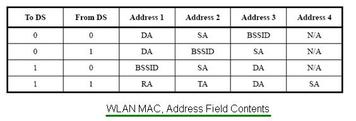WiFi Roaming: How it Works
Advertisement
This article explains the fundamentals of WiFi roaming and details how it functions. It also touches upon a WiFi roaming test solution.
A typical WLAN network is made up of a STA (Station or client), an AP (Access Point, also known as a router or hotspot), and an AAS (Authentication Server). The WLAN network is commonly called a WiFi network. WiFi networks provide service to local STAs within a home or office, or they can serve STAs across different rooms or between buildings.
Based on the distance covered, WiFi roamings are categorized into two main types: internal and external.
- Internal Roaming: This occurs when STA-1 moves from the coverage area of AP-1 to the coverage area of AP-2 within the same network.
- External Roaming: This happens when STA-1 moves from AP-1/AP-2 to the coverage area of AP-3, which is located in a different building or is far from the original WLAN network.
Let’s delve into the workings of WiFi roaming.
How WiFi Roaming Works

Figure 1: WiFi Roaming Types
As depicted in Figure 1, STA-1 continuously scans for WiFi signals from nearby APs. When the signal strength from the currently connected AP weakens compared to a nearby AP, STA-1 initiates a process called handover or association.
WLAN APs function as RADIUS clients for 802.1x. As you know, 802.1x is the standard for access authorization between a STA and an AP. RADIUS is used for communication between the AP and the AS (Authentication Server). The Access Point initiates authentication as soon as a Station (STA) attempts to associate with it. After successful authentication, the AP allows the STA to join the network and commence data communication.
The AAS is responsible for providing all relevant authentication information. Here’s a breakdown of the roles of the STA, AP, and AS:
- STA: Acts as the Supplicant; this is the roaming client.
- AP: Acts as the Authenticator; it forwards the roaming request to the AS.
- AS: The Authenticating Server.
Here’s the typical procedure followed during WiFi roaming:
- The AP requests the STA’s identity using EAPOL.
- The STA sends its identity to the AP. The AP forwards the received STA identity to the AS via EAP.
- The AS and STA engage in an EAP authentication dialog.
- Upon successful completion of the dialog, the STA and AS share a common session key.
- The AS transmits the session key to the AP in a RADIUS attribute as part of the “RADIUS accept message.”
- The AP enables the controlled port for the MAC address of the STA. It might also enable a WEP key.
WiFi Roaming Test Solution
Veriwave has developed a WiFi roaming test solution that provides comprehensive automated tests to analyze WLAN networks (infrastructure type) and mobile WLAN STAs roaming between APs.
The WiFi roaming tests provide the following measurements:
- Roaming Delay
- Network Capacity
- Call Quality during Roaming
- Test results in various file formats (e.g., HTML/CSV)
Advertisement
 RF
RF








